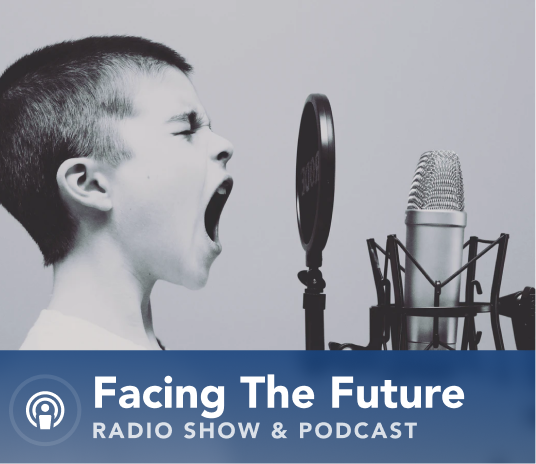On the latest Facing the Future, I was joined by Urban Institute Fellow, Bob Lerman, President of the Information Technology and Innovation Foundation, Rob Atkinson, and Concord Coalition Executive Director, Bob Bixby. We discussed how workforce investment and training and federal research and development can improve workforce productivity and long-term economic growth.
[Note: Portions of this week’s Facing the Future can be seen in the video clips posted below.]
In 2019, The Concord Coalition commissioned a series of papers on five topics with the idea of putting forth a fiscally-responsible economic growth agenda at a time when projected long-term economic growth was waning and the nation’s fiscal picture was worsening every year.
Little has changed with that long-term trajectory, but much has changed in the near term, as the country battles COVID-19 and the economy struggles to rebound from the effects of the pandemic. With millions suffering now and the long-term picture no better, Concord is revisiting its agenda to determine how it should be adapted to our new reality.
The month of October has featured discussions on each of the five key topics, ending with workforce and R&D investment this week. You can read the 2019 policy papers on pro-growth, workforce training and federal R&D by clicking here.
Bixby provided background as to why workforce training and federal R&D investment were included as topics of focus in a fiscally-responsible economic growth agenda.
“At a basic level, when you look ahead at economic growth, projections from just about every nonpartisan source show that long-term growth is expected to be less than it has been in the past by a considerable amount, and that’s partially due to a major slowdown in workforce growth and partially a slowdown in productivity,” Bixby said. “Workforce training addresses both of those key issues; you want to encourage people to join the workforce and make workers more productive.”
Bixby also added that federal R&D investment considers some creative methods to help spur the rate of long-term economic growth and increase productivity.
On workforce training, Lerman said, there were three areas of focus within his policy paper: improving information between employers and workers, documenting and marketing relevant skills, as well as better utilizing apprenticeships.
“The apprenticeship initiative that we’ve proposed does have some government funding, but the bulk of the training would really be paid for by the companies,” he said. “Why would they do it? One reason is they want skilled workers in the end, but the other reason is that the apprenticeship is a unique institution that provides a dual output: the apprentice is learning on the job as well as undertaking activities on the job that employers would have to hire people for anyway.”
Lerman added that the employer recoups some of the cost of the apprenticeship as a result.
He said there are only a handful of highly-funded federal programs focused on workforce training and investment. “The question is how well do they work? And the answer is they could work better.”
“If we moved the needle a bit more, actually just moved the ship more toward things that really work, I think we could do a much better job for the public for about the same amount of money,” Lerman said.
He said the COVID-19 pandemic has created a much larger role for online learning in worker training and apprenticeships, which may be here to stay, but it has also put many workers at risk.
“Certain sectors have been hit extremely hard, and so helping people in those fields return and get into better careers is vital,” Lerman added.
On federal R&D investment and efforts to increase workforce productivity and improve long-term economic growth, Atkinson said, “It’s a crisis, we’re not raising productivity … and growing the economy faster is this amazing thing, it gives us so much.”
R&D is a large factor in increasing productivity, he added.
“So, one of the big things we wanted to do was spur research and development, partly in the private sector with a more generous R&D tax credit … but also with additional federal R&D spending,” Atkinson said.
He added that, as a share of GDP, federal spending on R&D is the lowest it has been since before Sputnik, and it just keeps dropping.
“The problem is, there’s no productivity mission in federal R&D,” Atkinson said. “It’s to do other things – understand science or get better weapons – but we argue that we should expand federal R&D and target it on areas where we know there will be productivity benefits.”
“Congress has to take the lead on this, and give guidance to all the R&D agencies to have them come up with some sort of a productivity agenda – explaining what it is they’re funding and how it leads to productivity,” he said.
“And the financial media completely ignores this, but why do they ignore it? Because economists ignore it, policymakers ignore it,” Atkinson said. “We need to be talking about it more.”
The pandemic, for all of its negative effects, has produced two positive benefits: it has forced members of Congress to reorient their thinking on this topic and there will likely be a push for a big stimulus package next year, some of which will be focused on R&D and investment.
Hear more on Facing the Future. I host the program each week on WKXL, NHTalkRadio.com (N.H.), and it is also available via podcast. Join me and my guests as we discuss issues relating to national fiscal policy with budget experts, industry leaders and elected officials. Past broadcasts are available here. You can subscribe to the podcast on Spotify, Pandora, iTunes, Google Play Music or with an RSS feed. Follow Facing the Future on Facebook and watch videos from past episodes on The Concord Coalition YouTube channel.





